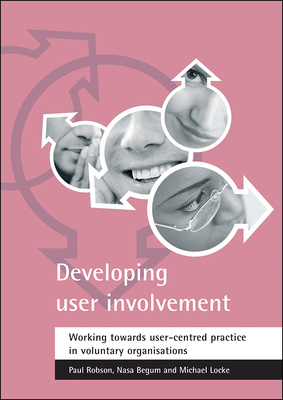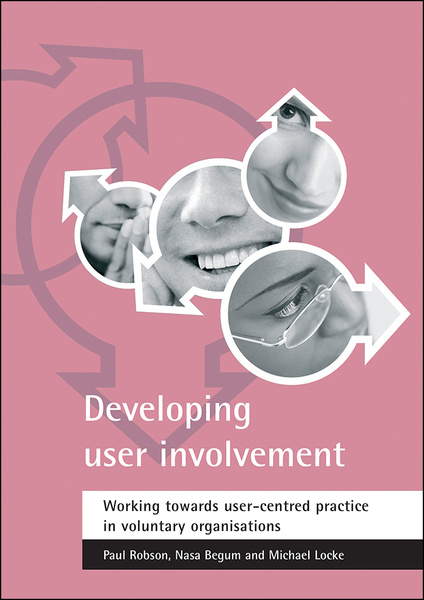Developing user involvement
Working towards user-centred practice in voluntary organisations
By Paul Robson, Nasa Begum and Michael Locke
Published
Jul 2, 2003Page count
34 pagesISBN
978-1861345370Dimensions
297 x 210 mmImprint
Policy PressThis report is based on an action research project which involved service users, managers, staff and trustees. It identifies enablers of and barriers to increased user involvement. It also describes emerging approaches and important themes. It will help practitioners, managers and trustees plot their own journeys towards increased user involvement.
The report:
proposes 'user-centred user involvement', distinguishing it from 'management-centred user involvement', as a tool for analysing whose interests are served;
highlights critical factors that enable change, such as: leadership style, consistent commitment, building strong relationships and communication between decision makers and users;
can be used to assess if the conditions for developing user-centred user involvement exist;
can also be used for planning change.
This report is aimed at managers, service users, trustees and consultants who are working to increase user involvement in their own organisations. It will also be useful to researchers as a contribution to knowledge and debates about user involvement.
Paul Robson is Principal Research Fellow at the Centre for Institutional Studies, University of East London and a freelance consultant. He specialises in research and development work with voluntary organisations.
Nasa Begum is a policy officer for a national voluntary organisation. She has a background in social work, policy, training, user involvement and equalities work.
Michael Locke is Reader and Director of the Centre for Institutional Studies, University of East London. He has taught, researched and written on issues of voluntary and community action and organisation for over 20 years.
Contents: Introduction; Summary of findings; Enablers of change; Barriers to change; Overview and issues; Conclusion.










